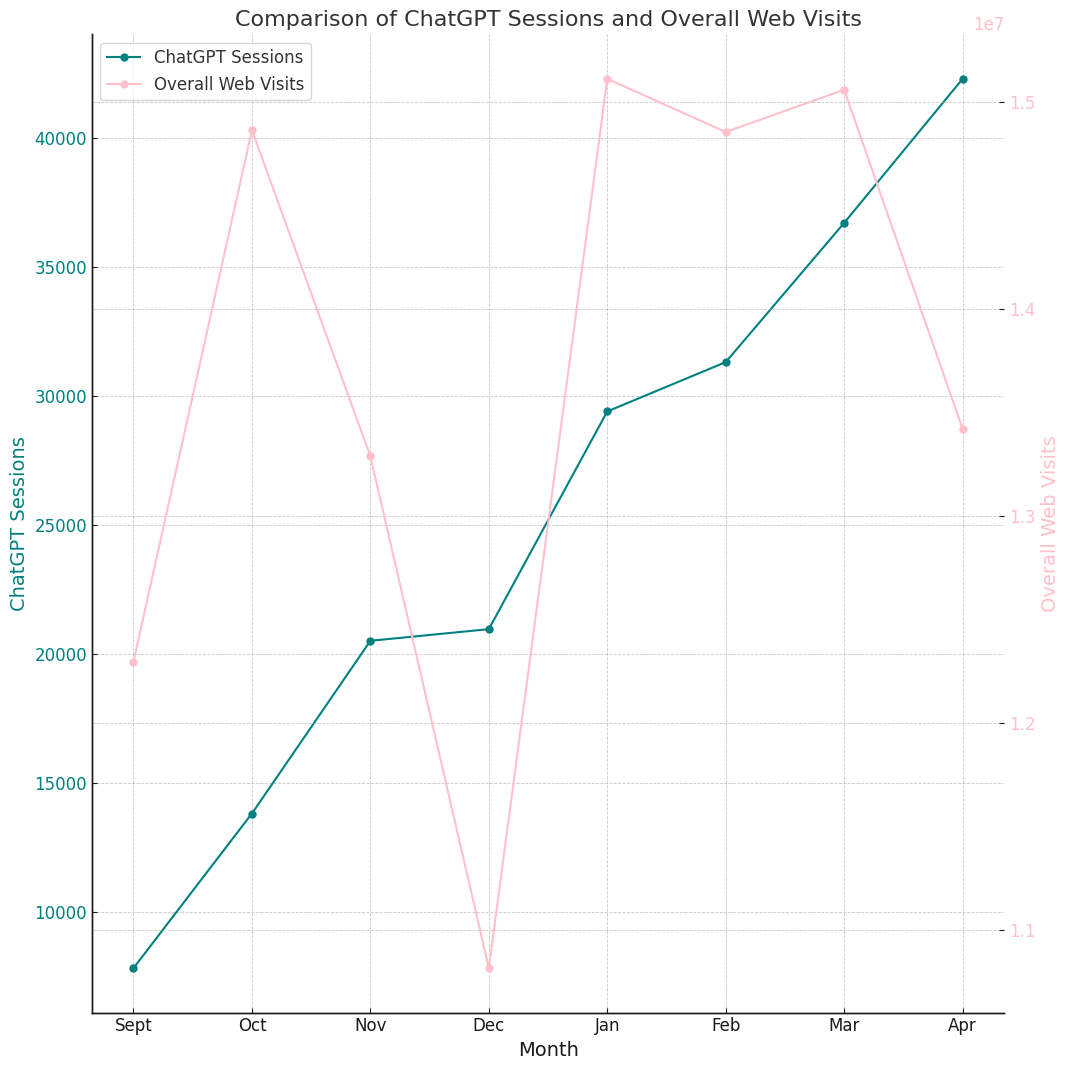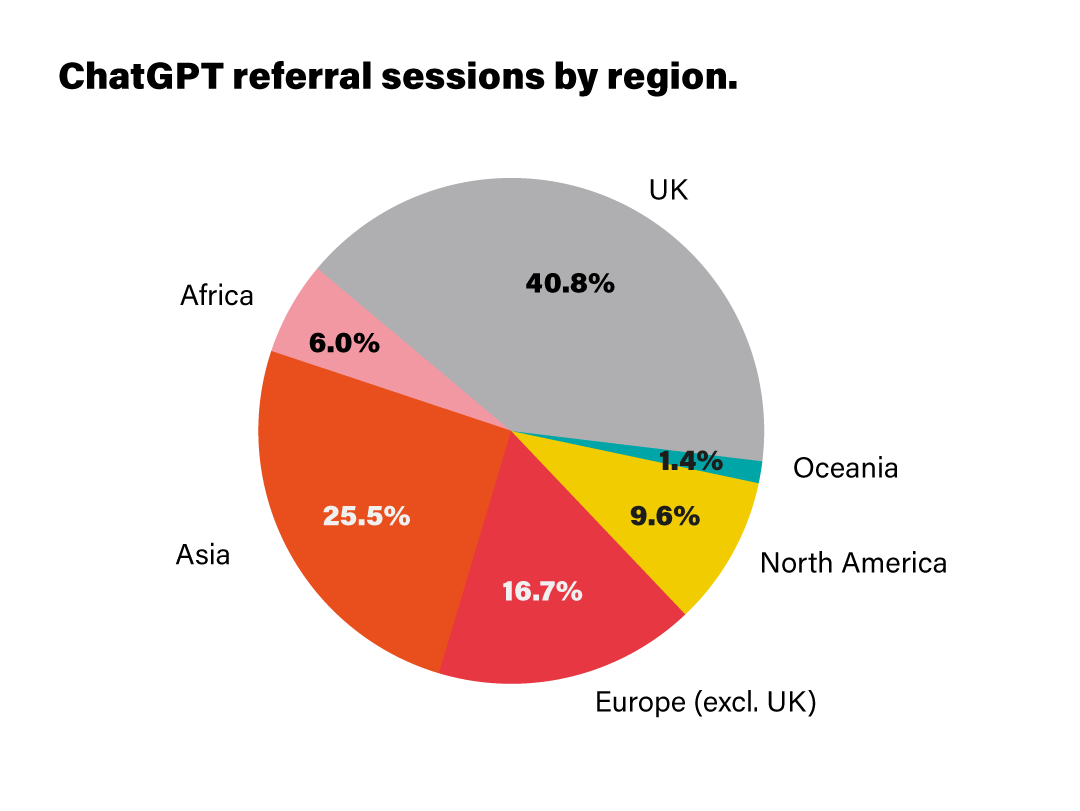Is ChatGPT rewriting the student journey?
By Josh Kilmister

“Computers are useless. They can only give you answers.”
— Pablo Picasso
But Picasso never used AI.
ChatGPT and AI, if it hasn’t already, will be responsible for the biggest shift in the way in which we market to students since the internet – and we’re already starting to see the proof.
But while the frequency at which it pops up in conversation might make it feel like it’s been around forever, AI as we understand it today is still in its infancy.
In saying that, there are already trends emerging and, while there is still a gaping hole in the general understanding of how we keep up, there’s also a clear opportunity for those willing to lean in early - to test, learn, and adapt before the rulebook is fully written.
This article won’t give you the answers, but it might help you ask the right questions - and that’s where the real shift begins.
It’s no surprise that ChatGPT has started appearing on the radar of university marketers given its impact - and perceived future impact - on how we work (and live, breathe, sleep, eat… the list goes on).
And it’s easy to get swept up in that narrative and make assumptions about what it means for the sector going forward. But what stands out more than anything is just how quickly AI has emerged as a legitimate referrer.
Comparing sessions from September–December to January–April shows almost a 3x increase in university website visits driven directly by ChatGPT.
The most interesting part? It’s a rapid rise, sure - but it’s one that’s happened incrementally. Break the data down by month and, even during the notoriously quiet festive period, referrals from ChatGPT continued to grow.
This suggests that it isn’t just a blip. It’s clear evidence that students are beginning to treat ChatGPT as a genuine part of their university research journey, and it’s something our MediaMapper research has already begun to detect.

In a recent survey of over 2,500 existing and prospective undergraduate students, 30% said they expect ChatGPT to be an important tool when researching where to study.
That’s up from 24% in 2024, and projected to increase – in line with uptake of generative AI – in next year’s edition.
University websites still top the list of trusted sources, and rightly so. And the growing role of AI doesn’t replace that.
If anything, it adds a new layer of urgency: we need to ensure ChatGPT acts as a referrer, not an interceptor. In other words, the goal is not to compete with AI tools, but to work in tandem with them by making sure our content, messaging, and positioning remain visible, accurate, and helpful when surfaced by tools students are starting to rely on.
You’d be forgiven for assuming the traffic referred from ChatGPT was low quality.
Regardless of your relationship with AI, there is a natural scepticism; that traffic driven by an automated assistant might be shallow, unfocused.
But what if I told you that referrals from ChatGPT spent, on average, 35% longer on your website than that from organic Google searches?
In a world where everything is expected to be measured, attributed, and scrutinised for its contribution to leads and applications, we often overlook the importance of having a prospective student spending time on-site.
No more so than on course pages, where the stakes are highest. Here, we’ve seen average time on site from ChatGPT referrals come in 44% higher than organic search.
That implies intent. They’re not bouncing in and out, they’re spending time. Digging in. Which suggests that when ChatGPT recommends a university link, the user genuinely wants to explore it.
One surprise - or dare I say, opportunity - is the limited number of referrals directly to Open Day registration pages.
Given how critical open days are to decision-making, and how increasingly difficult it is for students to choose which ones to attend, it feels like it’s only a matter of time before we start to see more of that behaviour.
Who’s actually visiting?
While the UK leads the way in total sessions from ChatGPT referrals, what’s perhaps more revealing is how widely distributed the remaining traffic is across the globe.
Asia represents more than a quarter of all sessions, with India and Pakistan standing out as key contributors. This aligns with trends we've seen elsewhere: regions with high mobile-first engagement and digitally literate youth populations are often the quickest to adopt new tools for research and comparison.
Europe (excluding the UK) and North America also make up a significant portion of sessions, together contributing nearly 30% with countries like Germany, France, the US, and Canada all appearing frequently in the data. It’s clear this isn’t just a localised behaviour. Students globally are beginning to use AI not just as a novelty, but as a legitimate starting point for their university research.
And while Africa and Oceania currently represent smaller shares of traffic (6% and 1% respectively), the presence of countries like Nigeria, Egypt, Australia, and New Zealand signals that the use of ChatGPT in this context is already far from limited to major Western markets.
This level of geographic spread reinforces one thing: AI tools like ChatGPT are not just influencing how students think about university choices, they’re already influencing where they go.

“But where are the form completions?!” I hear you scream.
And honestly? There aren’t really any.
From the 135,000 sessions we analysed, fewer than 0.09% resulted in a completed form on the university website.
But the fact I’ve even included a section on this might be part of the problem.
We’re so conditioned to chase direct conversions that we risk missing the bigger picture. Not every channel is built to convert. Some are built to inform, influence, and inspire - and that’s exactly where ChatGPT sits in the journey right now.
Not every visit needs to end in a form submission to be valuable. Especially not when we’re talking about early-stage influence; the kind that shapes how students feel about an institution long before they’re ready to hand over their email address or phone number.
The reality is, this is a space where performance metrics are still catching up to behaviour. AI referrals aren’t meant to drive hard CTAs just yet. They’re helping students make sense of a complex landscape.
Let’s not get carried away. Right now, ChatGPT is responsible for a very, very small percentage of university website traffic.
We’re talking 0.3%. Somewhere between “more than Yahoo” and “still well behind Bing” in the race for second place behind Google.
But focusing on volume at this stage misses the point entirely. As of May 2025, ChatGPT has approximately 800 million weekly active users and around 122.5 million daily active users, processing over 1 billion queries each day.
We first started seeing signs of this shift in the last edition of MediaMapper - which doesn’t just track where students convert, but where they research. And the fact that it picked up ChatGPT referrals before most analytics platforms even registered them is telling. This isn’t just a new traffic source, it’s a new behaviour.
If you want to chat about how this data looks for your institution, are interested in learning more about MediaMapper or simply fancy a chat about the future of student recruitment marketing, why not get in touch with me?
